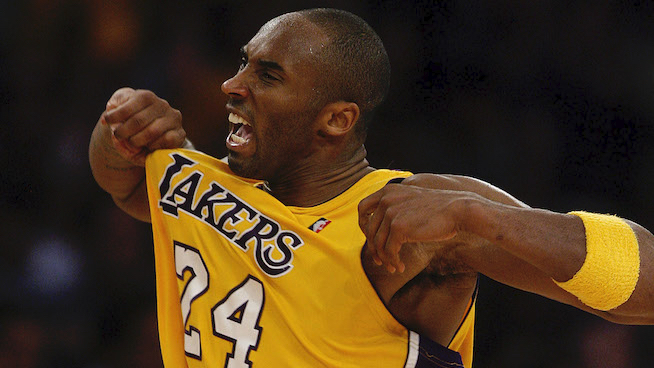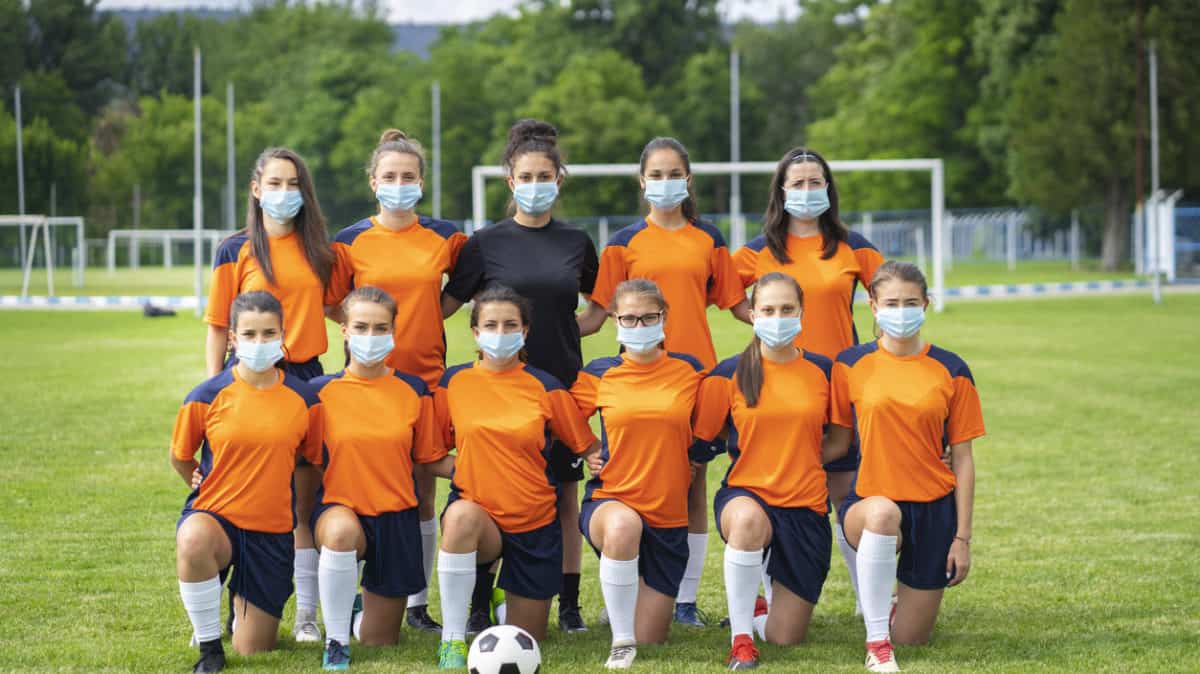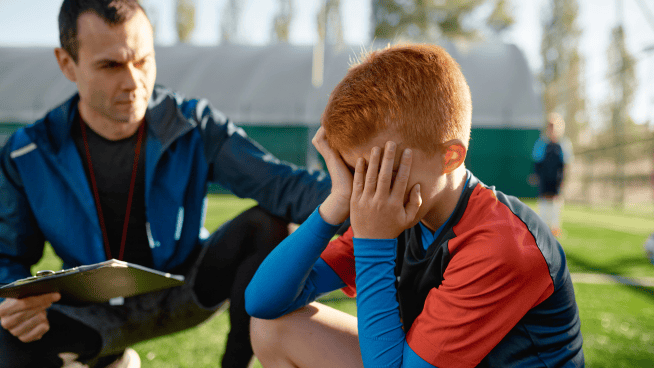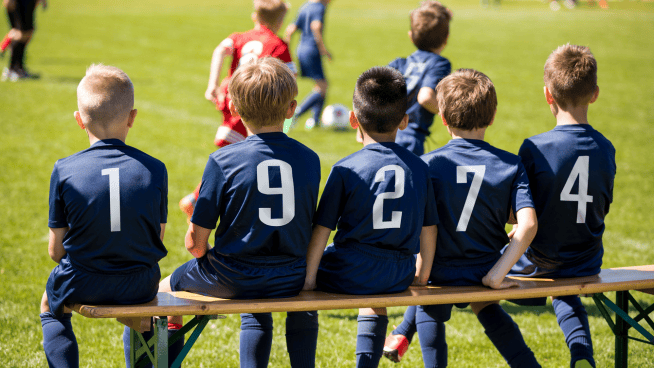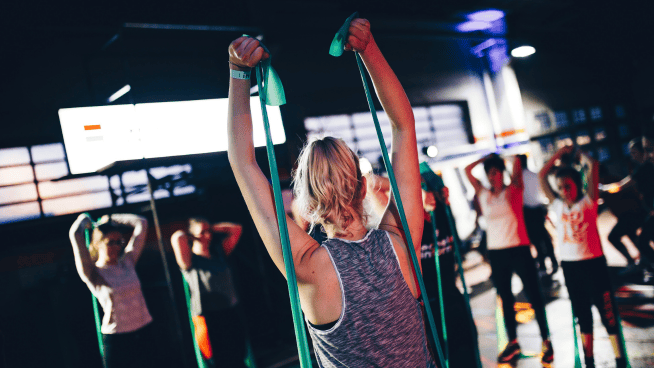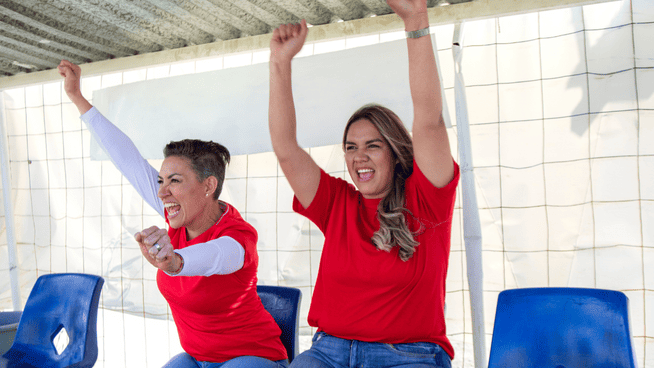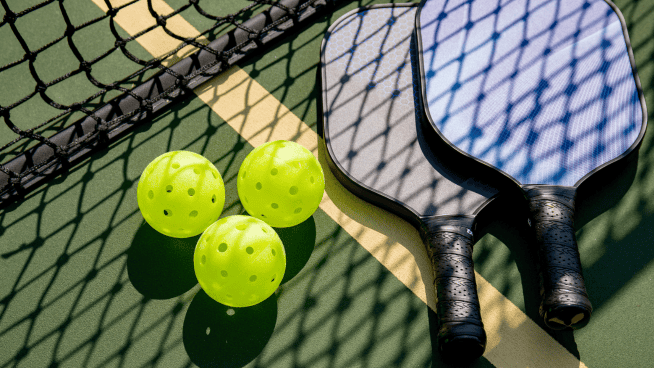The Unlikely Olympians of the U.S. Men’s Bobsled Team
Photo: AP
As kids, the athletes on this year’s U.S. Olympic Bobsled team never dreamed they’d be competing for an Olympic medal in their sport. In fact, most of them had never even seen the inside of a bobsled before they tried out for the national team.
STACK had a chance to speak with three athletes and one coach from the U.S. Bobsled team—Justin Olsen, Dallas Robinson, Nick Cunningham and Mike Kohn—who also serve in the National Guard. They described what it takes to compete on the world’s biggest stage while serving their country at the same time.
SGT Justin Olsen
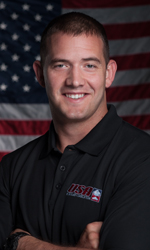
Justin Olsen
Photo courtesy of USOC
Justin Olsen attended the U.S. Air Force Academy for a year before trying out for the bobsled team in 2007. He went on to become part of the U.S. four-man team that won gold in the 2010 Olympics, ending a 62-year drought for the U.S. He’s looking to repeat in Sochi as a push athlete in the four-man event. He’s currently a sergeant in the New York National Guard.
STACK: Prior to your tryout, had you ever been in a bobsled before?
Olsen: No, I hadn’t. I’d only seen it on TV and Cool Runnings.
Most kids’ introduction to bobsled seems to be Cool Runnings.
Olsen: When I joined, my brothers were pretty young, and they just giggled and giggled because that’s what they were watching at the time.
What’s involved in a bobsled tryout for someone who has never ridden a bobsled before?
Olsen: It’s a lot like the NFL Combine. You’re initially assessed on your athleticism, so there’s a timed run, some lifts, a broad jump and the shot toss. They’re really trying to test your explosive movements.
Describe your first ride in a bobsled.
Olsen: I was hooked from the first time I went down the track. Your first time down, it’s worse than any roller coaster you’ve ever ridden. You’re approaching speeds of 80 to 90 miles per hour, and there’s no way to stop the sled. I was just told to hold on. There’s some fear, but it’s also an adrenaline rush.
You won a gold medal in the 2010 Olympics. Tell us about that experience.
Olsen: In 2010, we were the team that was supposed to win. To block out the noise, I just tried to approach the race like it was any other race. When we got to our final run, I remember looking around and thinking that this is it. Everything we had done up to that point was for that moment. During the race, I concentrated on every little thing I needed to do, and when we made it through 50/50 [the course’s most difficult turn] I knew we had won gold. I was just trying not to take my hands off the handles.
Olsen: Now, the target on our back is much larger and the expectations are higher. This season, we’re only successful if we place first or second, and sometimes silver isn’t even enough. We are striving for gold every race.
What does your training look like right now?
Olsen: I’ve modified my training so I can be the best athlete that I can be on the day of the race. With the Olympics right around the corner, I’m doing high intensity and low volume. It’s about staying at that peak level without adding stress to your body. The last thing you want to do is get bogged down by your training.
As an athlete who has experienced the ultimate success in a sport you never thought you’d compete in, what advice do you have for young athletes trying to plan their future?
Olsen: Your vision of the future isn’t always what you think it is when you’re 17 years old. No matter how much or how little success you’ve had, work as hard as you can, because opportunities open up for those who work hard. If you work hard, success will find you.
SGT Dallas Robinson
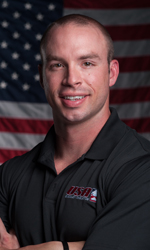
Dallas Robinson
Photo courtesy of USOC
Dallas Robinson, a sergeant in the Kentucky National Guard, will be competing in his first Olympics at the Sochi games. He’ll be pushing alongside Justin Olsen in the four-man event. Before coming to bobsled, Robinson coached college track. He says his passions are coaching and working with kids.
You got into bobsledding because a track athlete you used to coach invited you to push with him in an America’s Cup race. What was your reaction when you got the invitation?
Robinson: Initially I laughed at it, but he kept bugging me, and my wife said it would be a fun vacation. I’m scared of heights, I get motion sickness and I don’t like cold weather, so I said, “Sure. Sounds like a great time.” After I got invited back for a few more races, my wife and I decided that this would be a great opportunity to pursue my military career and finish out my athletic career at the same time.
Did you ever dream of being an Olympian?
Robinson: As a high-level college athlete, I always dreamt about it, but I felt like the stars had to align for it to work out. I never thought it would be as I hit 30 years old as a bobsledder, but I always worked at being the best athlete I could.
You volunteered to help with Hurricane Sandy relief in 2011. What led to that decision?
Robinson: Before Hurricane Sandy hit, [U.S. bobsled teammate] Nick Cunningham and I were talking, and we felt like if there was any way we could help, we wanted to pitch in. Our hearts really ached for the victims. We spoke to [assistant coach] LT [Mike] Kohn, and he encouraged us that our military duty [to help Sandy victims] should take precedence over everything else.
What did you experience when you were there?
Robinson: SGT Cunningham and I haven’t been deployed, but we thought it looked like a war zone. We spent a lot of time cutting carpet out of basements, carrying furniture and making sure people had supplies. It felt like all the time we had spent in training was paying off. Out of all the things I did in the military and through my bobsled career, that was one of the most memorable and rewarding.
SGT Nick Cunningham
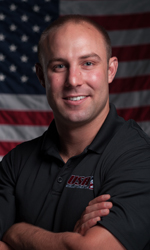
Nick Cunningham
Photo courtesy of USOC
Sochi will be Nick Cunningham’s second Olympics, his first as a driver. He will pilot the four-man bobsled pushed by Justin Olsen, Dallas Robinson and Johnny Quinn. When he’s not on the track, Cunningham enjoys surfing and rodeo.
How did you get into the sport?
Cunningham: It started off as a family joke. When I was a track athlete at UC Santa Barbara in 2004, my parents came down for a track meet. We were just going for a Sunday drive and my mom joked that the road looked like a bobsled track. My dad said, “You’re fast. Why don’t you try out for the bobsled team?” I grew up on the California coast surfing every day, nowhere near snow, so bobsled was never really on my radar. I came to a tryout at the end of my senior year as kind of a graduation gift to myself. I just wanted to try something outside of my comfort zone, but I ended up making the team.
You joined the National Guard after competing in the last Olympics. What made you want to join?
Cunningham: I knew about the Guard through LT [Mike] Kohn, who was my pilot in the last Olympics. I always noticed how proud he was to wear both uniforms. I remember putting on the U.S. uniform in the last Olympics and thinking, “There’s nothing else that will make me feel the way I do right now.” It’s that sense of selfless pride representing my country. After that, I talked to a recruiter and joined the National Guard. When I put on my National Guard uniform for the first time, I felt that same sense of pride I got in the Olympics. It’s a uniform I get to wear every single day. That means something.
You speak a lot at high schools. What topics do you cover with student-athletes?
Cunningham: I like to talk about the importance of accountability. Most people today just point fingers when there’s an issue. Nobody wants to take the blame and do the work. I talk about setting goals and then being accountable for every action—both good and bad.
I also talk about bullying. Growing up, I was always the small, bullied kid. I’m 220 pounds, and in my sport, I’m still the small guy. I always let people know that no matter what their dreams are, they can achieve them if they’re willing to work hard. Everyone wants the easy way to their dreams, but it’s not going to happen unless they put the work in.
[pullquote] “We started getting on the podium when we prepared like we should be there.” [/pullquote]What’s your approach to training?
Cunningham: I walk in with a smile and leave with a smile. When I’m laughing or joking around, some people believe that I’m slacking off, but I perform better when I’m happy. I make mistakes when I’m stressed out, and this is a sport that doesn’t leave room for mistakes.
I also think it’s important to have mentors. When I have mentors, I tend to work more for them than I do myself because I don’t want to let them down. Right now, I look up to my teammate Steve Holcomb. It’s been huge for me because I have the best in the world to learn from.
How has this season prepared you for the Olympics?
Cunningham: We expect to be on the podium. We’re working week in and week out, not just to beat certain teams, but to be on the podium. That mindset sort of clicked at the end of the season; we started getting on the podium when we prepared like we should be there. We’ve put in the work, and we’re ready for the Olympics.
I was just washing our sled, getting the new Olympic wraps on. When you see the wrapper we’ve had all season get taken off and “USA” on the sled, it makes things very real. It makes you work a little bit harder and stay focused.
1LT Mike Kohn
Mike Kohn has been involved in bobsled for more than 20 years. During that time, he competed in two Olympic Games, winning a bronze medal in 2002. He retired as an athlete after the 2010 Games, but decided to return as an assistant coach. 1LT Kohn also serves as an advisor to the National Guard citizen-soldiers on the team.
What’s it been like working with this particular group of athletes?
Kohn: This is a great, hard-working group of guys. If I had a daughter, I wouldn’t mind any of them dating her. They’re easy to coach, they’ve been easy to work with and they’re always the first to volunteer when something needs to be done. I’m also in awe of their athleticism; they’re faster and stronger than I ever dreamed of being.
What’s the most important component of a bobsled team?
Kohn: There are so many things that go into it. There’s the $100,000 sled, but there’s also power, strength, speed and athleticism. But out of everything, I believe teamwork is the most important aspect of a bobsled run. Athletes from individual sports sometimes take a while to get the team aspect of bobsled. One of the things that the National Guard athletes have over civilian athletes is that they understand the Guard values. We try to instill in them that it’s never about one person; it’s about a team.
With the Olympics right around the corner, how are you preparing the team for competition?
Kohn: Right now, our goal as coaches is to protect them from distractions that may get them off track. You train in obscurity for four years, then you get to the Olympic Games, and all the cameras in the world are on you. It’s a little bit of a shock to the guys who haven’t been there before. We’re also letting them rest and recover from a long season. Everything right now is focused on preparing them be at their best in Sochi.
RECOMMENDED FOR YOU
MOST POPULAR
The Unlikely Olympians of the U.S. Men’s Bobsled Team
Photo: AP
As kids, the athletes on this year’s U.S. Olympic Bobsled team never dreamed they’d be competing for an Olympic medal in their sport. In fact, most of them had never even seen the inside of a bobsled before they tried out for the national team.
STACK had a chance to speak with three athletes and one coach from the U.S. Bobsled team—Justin Olsen, Dallas Robinson, Nick Cunningham and Mike Kohn—who also serve in the National Guard. They described what it takes to compete on the world’s biggest stage while serving their country at the same time.
SGT Justin Olsen

Justin Olsen
Photo courtesy of USOC
Justin Olsen attended the U.S. Air Force Academy for a year before trying out for the bobsled team in 2007. He went on to become part of the U.S. four-man team that won gold in the 2010 Olympics, ending a 62-year drought for the U.S. He’s looking to repeat in Sochi as a push athlete in the four-man event. He’s currently a sergeant in the New York National Guard.
STACK: Prior to your tryout, had you ever been in a bobsled before?
Olsen: No, I hadn’t. I’d only seen it on TV and Cool Runnings.
Most kids’ introduction to bobsled seems to be Cool Runnings.
Olsen: When I joined, my brothers were pretty young, and they just giggled and giggled because that’s what they were watching at the time.
What’s involved in a bobsled tryout for someone who has never ridden a bobsled before?
Olsen: It’s a lot like the NFL Combine. You’re initially assessed on your athleticism, so there’s a timed run, some lifts, a broad jump and the shot toss. They’re really trying to test your explosive movements.
Describe your first ride in a bobsled.
Olsen: I was hooked from the first time I went down the track. Your first time down, it’s worse than any roller coaster you’ve ever ridden. You’re approaching speeds of 80 to 90 miles per hour, and there’s no way to stop the sled. I was just told to hold on. There’s some fear, but it’s also an adrenaline rush.
You won a gold medal in the 2010 Olympics. Tell us about that experience.
Olsen: In 2010, we were the team that was supposed to win. To block out the noise, I just tried to approach the race like it was any other race. When we got to our final run, I remember looking around and thinking that this is it. Everything we had done up to that point was for that moment. During the race, I concentrated on every little thing I needed to do, and when we made it through 50/50 [the course’s most difficult turn] I knew we had won gold. I was just trying not to take my hands off the handles.
Olsen: Now, the target on our back is much larger and the expectations are higher. This season, we’re only successful if we place first or second, and sometimes silver isn’t even enough. We are striving for gold every race.
What does your training look like right now?
Olsen: I’ve modified my training so I can be the best athlete that I can be on the day of the race. With the Olympics right around the corner, I’m doing high intensity and low volume. It’s about staying at that peak level without adding stress to your body. The last thing you want to do is get bogged down by your training.
As an athlete who has experienced the ultimate success in a sport you never thought you’d compete in, what advice do you have for young athletes trying to plan their future?
Olsen: Your vision of the future isn’t always what you think it is when you’re 17 years old. No matter how much or how little success you’ve had, work as hard as you can, because opportunities open up for those who work hard. If you work hard, success will find you.
SGT Dallas Robinson

Dallas Robinson
Photo courtesy of USOC
Dallas Robinson, a sergeant in the Kentucky National Guard, will be competing in his first Olympics at the Sochi games. He’ll be pushing alongside Justin Olsen in the four-man event. Before coming to bobsled, Robinson coached college track. He says his passions are coaching and working with kids.
You got into bobsledding because a track athlete you used to coach invited you to push with him in an America’s Cup race. What was your reaction when you got the invitation?
Robinson: Initially I laughed at it, but he kept bugging me, and my wife said it would be a fun vacation. I’m scared of heights, I get motion sickness and I don’t like cold weather, so I said, “Sure. Sounds like a great time.” After I got invited back for a few more races, my wife and I decided that this would be a great opportunity to pursue my military career and finish out my athletic career at the same time.
Did you ever dream of being an Olympian?
Robinson: As a high-level college athlete, I always dreamt about it, but I felt like the stars had to align for it to work out. I never thought it would be as I hit 30 years old as a bobsledder, but I always worked at being the best athlete I could.
You volunteered to help with Hurricane Sandy relief in 2011. What led to that decision?
Robinson: Before Hurricane Sandy hit, [U.S. bobsled teammate] Nick Cunningham and I were talking, and we felt like if there was any way we could help, we wanted to pitch in. Our hearts really ached for the victims. We spoke to [assistant coach] LT [Mike] Kohn, and he encouraged us that our military duty [to help Sandy victims] should take precedence over everything else.
What did you experience when you were there?
Robinson: SGT Cunningham and I haven’t been deployed, but we thought it looked like a war zone. We spent a lot of time cutting carpet out of basements, carrying furniture and making sure people had supplies. It felt like all the time we had spent in training was paying off. Out of all the things I did in the military and through my bobsled career, that was one of the most memorable and rewarding.
SGT Nick Cunningham

Nick Cunningham
Photo courtesy of USOC
Sochi will be Nick Cunningham’s second Olympics, his first as a driver. He will pilot the four-man bobsled pushed by Justin Olsen, Dallas Robinson and Johnny Quinn. When he’s not on the track, Cunningham enjoys surfing and rodeo.
How did you get into the sport?
Cunningham: It started off as a family joke. When I was a track athlete at UC Santa Barbara in 2004, my parents came down for a track meet. We were just going for a Sunday drive and my mom joked that the road looked like a bobsled track. My dad said, “You’re fast. Why don’t you try out for the bobsled team?” I grew up on the California coast surfing every day, nowhere near snow, so bobsled was never really on my radar. I came to a tryout at the end of my senior year as kind of a graduation gift to myself. I just wanted to try something outside of my comfort zone, but I ended up making the team.
You joined the National Guard after competing in the last Olympics. What made you want to join?
Cunningham: I knew about the Guard through LT [Mike] Kohn, who was my pilot in the last Olympics. I always noticed how proud he was to wear both uniforms. I remember putting on the U.S. uniform in the last Olympics and thinking, “There’s nothing else that will make me feel the way I do right now.” It’s that sense of selfless pride representing my country. After that, I talked to a recruiter and joined the National Guard. When I put on my National Guard uniform for the first time, I felt that same sense of pride I got in the Olympics. It’s a uniform I get to wear every single day. That means something.
You speak a lot at high schools. What topics do you cover with student-athletes?
Cunningham: I like to talk about the importance of accountability. Most people today just point fingers when there’s an issue. Nobody wants to take the blame and do the work. I talk about setting goals and then being accountable for every action—both good and bad.
I also talk about bullying. Growing up, I was always the small, bullied kid. I’m 220 pounds, and in my sport, I’m still the small guy. I always let people know that no matter what their dreams are, they can achieve them if they’re willing to work hard. Everyone wants the easy way to their dreams, but it’s not going to happen unless they put the work in.
[pullquote] “We started getting on the podium when we prepared like we should be there.” [/pullquote]What’s your approach to training?
Cunningham: I walk in with a smile and leave with a smile. When I’m laughing or joking around, some people believe that I’m slacking off, but I perform better when I’m happy. I make mistakes when I’m stressed out, and this is a sport that doesn’t leave room for mistakes.
I also think it’s important to have mentors. When I have mentors, I tend to work more for them than I do myself because I don’t want to let them down. Right now, I look up to my teammate Steve Holcomb. It’s been huge for me because I have the best in the world to learn from.
How has this season prepared you for the Olympics?
Cunningham: We expect to be on the podium. We’re working week in and week out, not just to beat certain teams, but to be on the podium. That mindset sort of clicked at the end of the season; we started getting on the podium when we prepared like we should be there. We’ve put in the work, and we’re ready for the Olympics.
I was just washing our sled, getting the new Olympic wraps on. When you see the wrapper we’ve had all season get taken off and “USA” on the sled, it makes things very real. It makes you work a little bit harder and stay focused.
1LT Mike Kohn
Mike Kohn has been involved in bobsled for more than 20 years. During that time, he competed in two Olympic Games, winning a bronze medal in 2002. He retired as an athlete after the 2010 Games, but decided to return as an assistant coach. 1LT Kohn also serves as an advisor to the National Guard citizen-soldiers on the team.
What’s it been like working with this particular group of athletes?
Kohn: This is a great, hard-working group of guys. If I had a daughter, I wouldn’t mind any of them dating her. They’re easy to coach, they’ve been easy to work with and they’re always the first to volunteer when something needs to be done. I’m also in awe of their athleticism; they’re faster and stronger than I ever dreamed of being.
What’s the most important component of a bobsled team?
Kohn: There are so many things that go into it. There’s the $100,000 sled, but there’s also power, strength, speed and athleticism. But out of everything, I believe teamwork is the most important aspect of a bobsled run. Athletes from individual sports sometimes take a while to get the team aspect of bobsled. One of the things that the National Guard athletes have over civilian athletes is that they understand the Guard values. We try to instill in them that it’s never about one person; it’s about a team.
With the Olympics right around the corner, how are you preparing the team for competition?
Kohn: Right now, our goal as coaches is to protect them from distractions that may get them off track. You train in obscurity for four years, then you get to the Olympic Games, and all the cameras in the world are on you. It’s a little bit of a shock to the guys who haven’t been there before. We’re also letting them rest and recover from a long season. Everything right now is focused on preparing them be at their best in Sochi.



